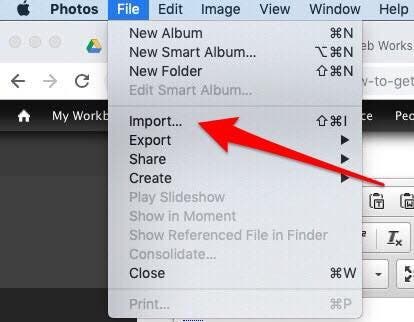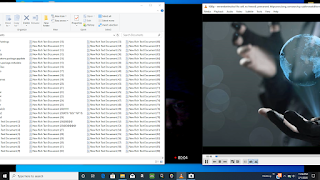Apple offers many applications that integrate with OS X and iOS to make syncing an iPhone with a Mac as effortless as possible. Programs such as iTunes and iPhoto copy your media to library folders. How to Send Photos from iPhone to Mac with Email. If you just want to transfer several photos from iPhone to Mac and your Mac is not at your hand, Email becomes a wonderful choice. Here is how to transfer photos from iPhone to Mac with Email: Run Photos App on your iPhone Tap on Albums to open Albums Page Choose the target album. How to Transfer Photos from iPhone to Mac Wirelessly. The easiest way to download pictures from.
Got some great pictures on your iPhone and want to transfer them to your Mac, so you can view them on the big screen or seriously edit them in iPhoto or Photoshop? If so, you're in the right place. Below we provide 4 ways to transfer photos from iPhone to Mac, so you can quickly and easily back up photos, recover lost photos deleted from your Mac, or edit your iPhone photos on Mac, etc.
- Solution 1. Copy Photos from iPhone to Mac via dr.fone (Best Option)
Solution 1: Transfer Photos from ANY iPhone to ANY Mac (Best Option)
Transferring photos from iPhone to Mac is easy. So many tools are available. Why dr.fone for Mac is the best option? The answer is very simple: it lets you get photos off your iPhone to any Mac without the risk of erasing the existing files on your iPhone. And it's able to copy any photo, including photos taken with your iPhone, synced from iTunes, downloaded from the Internet, and more from iPhone to Mac. Besides, it's the best iTunes companion, which helps to get songs and playlists directly from your iPhone to your iTunes Library without any duplicate - which iTunes can't do. Now, see how to use dr.fone to transfer photos from iPhone to Mac.
You can do this by using your respective computer's built-in Photos application, or you can use iCloud Photos to upload photos from your iPhone to iCloud and then download them from there onto your computer.
Note: dr.fone for Mac is kept updated all the time. Now the newest version fully supports MacOS Sierra and iOS 11, and the latest iPhone 8/X.
Sync Photo Library, Camera Roll or non Camera Roll Photos from iPhone to Mac
Step 1: Launch dr.fone
Install iPhone photos to Mac transfer. Connect iPhone with your Mac, and your iPhone information will be shown on the main interface.
Option 1: Backup All Photos from iPhone to Mac
You can see the option 'Backup Photos to Mac' option in the main windows. Click it, then all photos on your iPhone, including photos in Camera Roll, Photo Library, Photo Stream, and more will be saved to your Mac. In the newly popped up window, find a folder on your Mac to save these backed up photos.
Option 2: Transfer Selected Photos from iPhone to Mac
Click the 'Photos' tab in the main window, then you can see that photo album or folder on your iPhone. Click to open the album or folder in the left sidebar, then you can select photos and click 'Export' to save them on your Mac.
Solution 2: Transfer 'Camera Roll' Photos to Mac with iPhoto (Photos Taken with iPhone)
Step 1: Connect iPhone to MacAfter connecting your iPhone to your Mac. iPhoto will automatically launch and open to the Import window, listing your iPhone's images and videos under 'Camera Roll'.
Note: With iPhoto, Preview or Image capture, you can only sync photos from your iPhone camera roll—in other words, only photos taken by your iPhone. If you want to sync all your Photo Library images, go to Solution 1.
Step 2: Start Transfer Photos from iPhone to MacSelect the images you want to import into iPhoto, then select the 'Import Selected' option—or just drag the photos directly from the Camera Roll folder into iPhoto.
Solution 3: Transfer 'Camera Roll' Photos to Mac with Preview
 Step 1: Connect iPhone to Mac
Step 1: Connect iPhone to MacWhen you have connected your iPhone to your Mac, launch your Preview. Now go to the 'File' menu and choose 'Import from (your iPhone's name)...'
Step 2: Select Photos and Start TransferSelect your photos and click 'Import' or click 'Import All', choose the destination.
Solution 4: Transfer 'Camera Roll' Photos to Mac with Image Capture
Step 1: Select iPhone PhotosAfter connecting iPhone to Mac, open Image Capture application. When all photos load and are available, select the photos you want to import/delete. If you want to delete them all, simply hold command and 'a' and you'll see they will all be highlighted.
Step 2: Begin to Transfer iPhone Photos to MacWhen you select all the photos you want, click 'Import' to start the transfer. If you choose to import all of them then have them removed, click 'Import' and check the box that says 'delete after importing.
Part 5. What Makes dr.fone Outstanding on Transferring Photos from iPhone to Mac
| iPhone Photos | iPhoto | Preview | Image Capture | |
|---|---|---|---|---|
Camera Roll PhotosPhotos taken with your iPhone | √ | √ | √ | √ |
Photo Stream PhotosPhotos shared from other devices | --- | --- | --- | √ |
Photo Library PhotosPhotos synced from your computer to your phone | --- | --- | --- | √ |
Photo AlbumBuild photo albums on iPhone and transfer photo albums from iPhone to Mac | --- | --- | --- | √ |
Part 6. Common Issues and Troubleshooting on iPhone Photos Transfer
Q: When importing iPhone photos, iPhoto locked up?
Quit iPhoto and launch it again. To do so, go to Apple menu > force quit.
Q: How to delete photos from iPhoto?
For deleting photos from an Event, select the photos and press Delete key. Then go to iPhoto > Empty iPhoto Trash. To delete photos from an album, select the photos and press 'Command+Options+Delete'. Then empty iPhoto trash like above.
Q: Cannot see photos in my Photo Stream?
First tap Settings on your phone to check whether the Wi-Fi is connected. Then go to Settings > iCloud > Photos to see whether Photo Stream is turned on. Make sure the Camera app on your phone is closed. And ensure your phone battery power is higher than 20%.
Q: How to transfer photos sent from others iPhone by message to Mac?
If the photos are sent via iMessage, the photos will be on your Mac iMessage. Or you can try to transfer photos to Photo Stream.
Q: iPhoto keep crashing on Mavericks/Yosemite?
If you have updated to Mavericks, you can try to reinstall iPhoto. Just press Command + R to boot into the Recovery Volume to repair permissions and the disk. Then reinstall iPhoto on your Mac.
Choose where to keep your photos and videos
Make your photos and videos available on all your devices with iCloud Photos. Or store them locally only on your Mac or PC.
iCloud Photos
iCloud Photos keeps your photos and videos safe, up to date, and available automatically on all of your Apple devices, on iCloud.com, and even your PC. iCloud Photos always uploads and stores your original, full-resolution photos. You can keep full-resolution originals on each of your devices, or save space with device-optimized versions instead. Either way, you can download your originals whenever you need them. Any organizational changes or edits you make are always kept up to date across all your devices.
Download Iphone Photos To Mac Without Itunes Converter
The photos and videos that you keep in iCloud Photos use your iCloud storage. Before you turn on iCloud Photos, make sure that you have enough space in iCloud to store your entire collection. You can see how much space you need and then upgrade your storage plan if necessary.
Import to your Mac
You can use the Photos app to import photos from your iPhone, iPad, or iPod touch to your Mac.
- Connect your iPhone, iPad, or iPod touch to your Mac with a USB cable.
- Open the Photos app.
- The Photos app shows an Import screen with all the photos and videos that are on your connected device. If the Import screen doesn't automatically appear, click the device's name in the Photos sidebar.
- If asked, unlock your iOS device using your passcode. If you see a prompt on your iOS device asking you to Trust This Computer, tap Trust to continue.
- Either select the photos you want to import and click Import Selected, or click Import All New Photos.
- Wait for the process to finish, then disconnect your device from your Mac.

Learn what to do if you can't import photos from your iPhone, iPad, or iPod touch to your computer.
Import to your PC
You can import photos to your PC by connecting your device to your computer and using the Windows Photos app:
- Make sure that you have the latest version of iTunes on your PC. Importing photos to your PC requires iTunes 12.5.1 or later.
- Connect your iPhone, iPad, or iPod touch to your PC with a USB cable.
- If asked, unlock your iOS device using your passcode.
- If you see a prompt on your iOS device asking you to Trust This Computer, tap Trust or Allow to continue.
Then, visit Microsoft's website to learn how to import photos to the Windows Photos app in Windows 10.
If you have iCloud Photos turned on, you need to download the original, full resolution versions of your photos to your iPhone before you import to your PC. Find out how.
When you import videos from your iOS device to your PC, some might be rotated incorrectly in the Windows Photos app. You can add these videos to iTunes to play them in the correct orientation.
Learn what to do if you can't import photos from your iPhone, iPad, or iPod touch to your computer.
Learn more
How To Download Itunes To My Iphone
- Use Time Machine to back up all of your files, including your photos and videos, to an external hard drive.
- Import photos and video from storage media, like a hard disk or SD card, to Photos for macOS.
- Use a scanner and Image Capture to import photos that were taken with a film camera.
- Import your images directly to a folder on your Mac with Image Capture.
